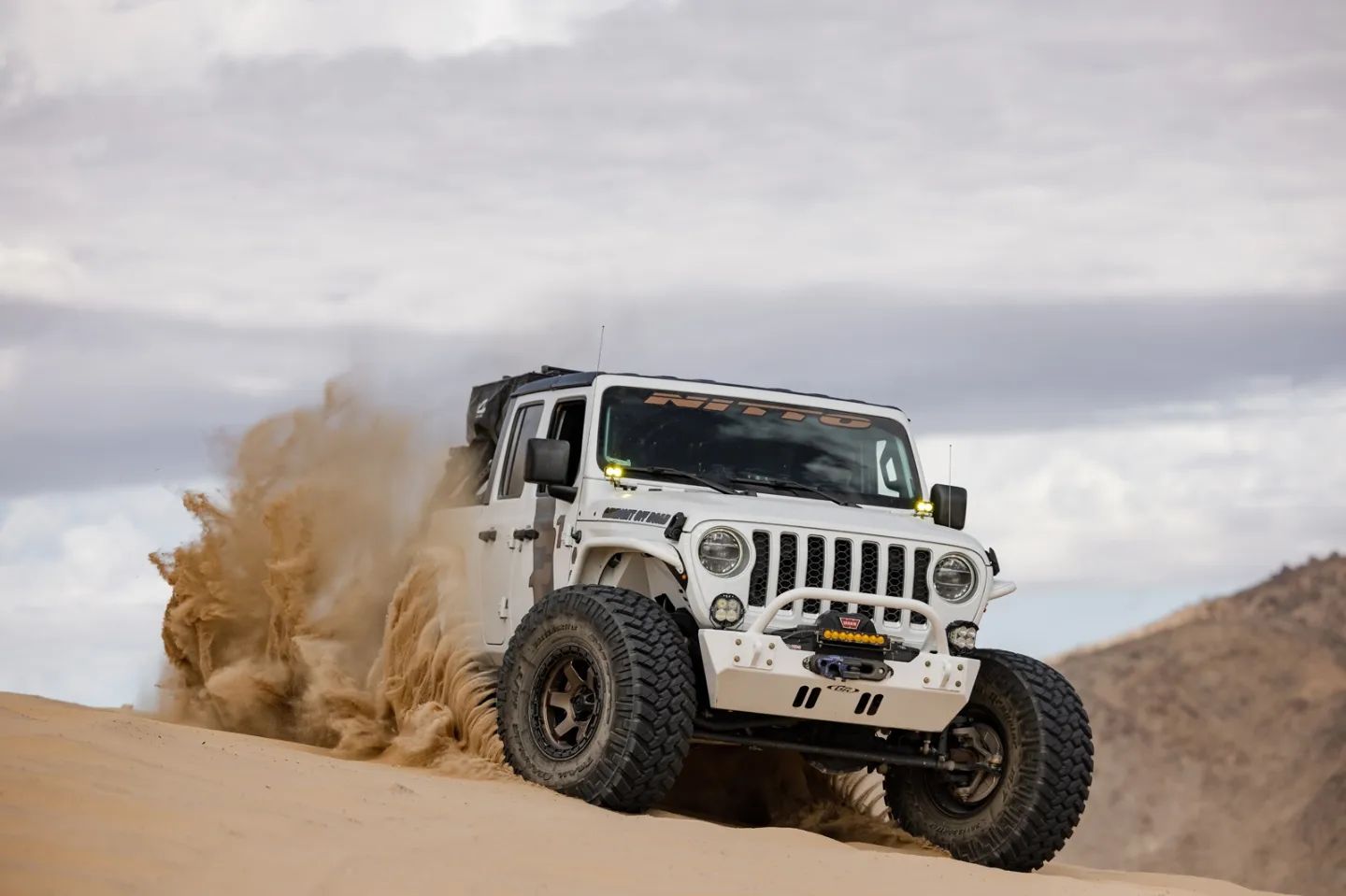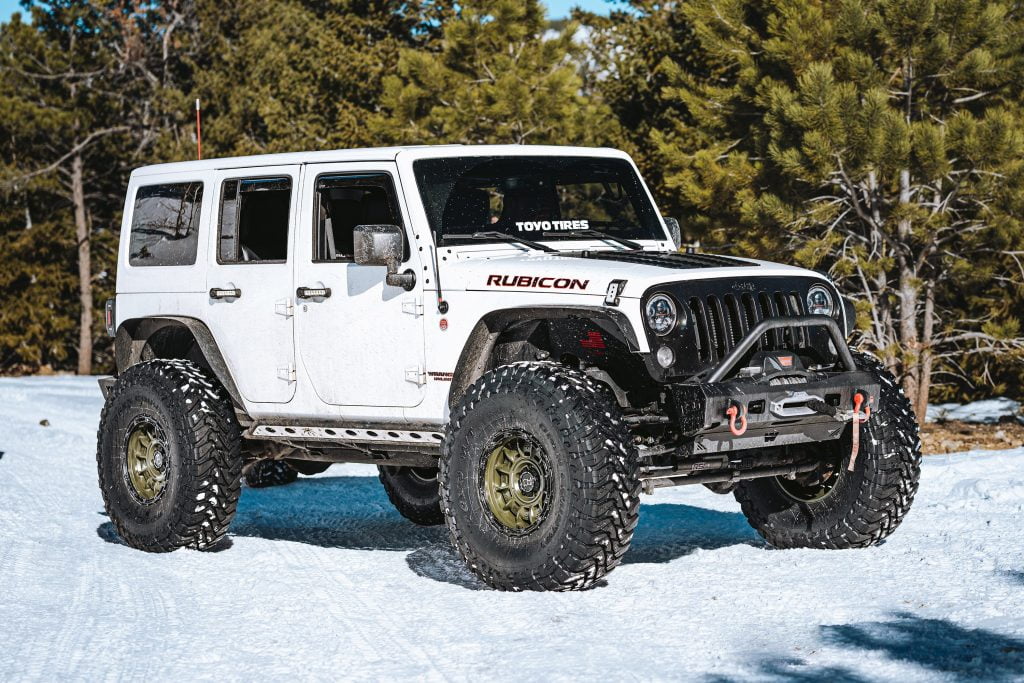
Thinking about upgrading your wheels but aren’t sure if the wheels you like will fit your truck? “Will this wheel fit?” is a common question for aftermarket wheel shoppers. Many factors go into proper wheel and tire fitment. Bolt pattern, wheel size, offset, and backspacing are just a few. You may know the wheel size you need and maybe you read the blog to learn about bolt patterns, but what’s this offset and backspacing business? Do you know the difference between offset and backspacing? Offset and backspacing are two similar ways to measure how a wheel will mount on a truck. They are critical to correct fitment. And while offset and backspacing basically measure the same thing, at the same time they are very different. Offset measures the distance between the wheel center and the mounting surface and backspace measures the distance between the mounting face and the inside edge. Here’s why the difference is so important.
WHAT WHEEL OFFSET MEASURES
Wheel offset measures the distance between the center of the wheel and the mounting surface in millimeters. If you need a refresher on the anatomy of a wheel, check out our guide to wheel anatomy. Offset can be positive, negative, or zero.

A positive offset means the mounting surface is on the front side of the wheel centerline.

A zero offset places the mounting surface at the centerline.

A positive offset means the mounting surface is on the front side of the wheel centerline.
The right offset is important for fit and appearance. It’s a key factor when you want to lift your truck and install larger wheels and tires. Here’s what you need to know.
As offset gets higher, (or you increase the offset from OEM), the wheel will mount further inward on your truck. This will give you more clearance from the outside edge of the tire and fender, but it will decrease the space between the inside edge of the tire and the suspension. That’s not such a good thing if you are trying to upsize your wheels and tires for off roading.
As offset decreases, (or you decrease the offset from OEM), the wheel will mount further outward on your truck. This increases the space between the inside edge of the tire and the suspension. A decreased offset gives your truck a wider stance. Now that’s an important consideration for trucks with a lift. To get more clearance from the suspension, you need less offset from OEM. You may need to go with a zero or negative offset to push the wheel and tire to the outside to get the clearance you need.
WHAT BACKSPACING MEASURES
Wheel backspace measures the distance between the inside edge of the wheel and its mounting face.
As you decrease backspacing, you gain more inside wheel clearance. So, less backspacing results in a smaller amount of the wheel in the wheel well. As you reduce the amount of wheel in the wheel well, you reduce the risk of the wheel rubbing the brakes or suspension.
As you increase backspacing, you reduce the amount of inside wheel clearance. More backspacing means more of the wheel is in the wheel well. More wheel in the wheel well increases the risk of the wheel rubbing against brakes or the suspension or even aftermarket mud flaps. That’s not a good thing.
Backspacing is even more important when you lift your truck. Pay very close attention to the maximum allowable backspace that is prespecified by the manufacturer of the lift kit. If you upsize your wheels and pick a wheel with too much backspace, the wheel won’t fit. Even if you don’t upsize the wheels at the time of the lift, hang on to the lift specs. You will always need to know the maximum allowable backspace for your kit.
Backspace is expressed in inches. Calculate backspace as follows:
Wheel width ÷ 2 + offset + ½” = Backspacing
OFFSETS AND BACKSPACING FOR OFF ROADING

If you want to upsize your truck wheels for off roading, here’s what you want to keep in mind in terms of offsets and backspacing.
- If you stay with the same wheel width, keep the new offset within 5 mm of the old offset in either direction.
- Avoid positive offset when possible for off road wheels. Too much positive offset is dangerous.
- If you pick wider wheels, make sure backspacing is decreased.
- Oversized brake calipers or suspension negatively impacts the amount of space available in the wheel well. When you oversize anything behind the wheel, decrease backspacing and decrease offset. If upsized rotors and calipers protrude 3 inches into the wheel well, those 3 inches must come from the wheel and tire.
- Always make sure no part of the tire will ever rub against any part of the suspension, body, or exhaust no matter how the wheel is turned.
There’s more to upsizing off road wheels than just offsets and backspacing. Consider the terrain you plan to conquer. Will you be mudding, rock climbing, sand cruising or trail riding? Your terrain is a factor in wheel selection. Will you be hauling when off roading? That extra load needs to be taken into consideration because the truck will ride lower when fully loaded.
Still not sure if the wheels you want will fit your truck? Just ask PowerHouse Wheels. Our techs can check the fitment and tell you if the wheel you want is the wheel that fits.


